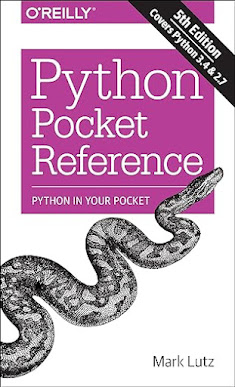Python is one of the most popular programming languages today, known for its simplicity and readability, making it an excellent choice for beginners. Whether you're new to programming or transitioning from another language, having a good book can significantly enhance your learning experience. In this blog, we'll explore some of the best Python books for beginners that provide comprehensive, easy-to-follow instructions and practical examples.
1. Python Crash Course by Eric Matthes
Overview
"Python Crash Course" by Eric Matthes is widely regarded as one of the best introductory books for Python. This book is designed to be a fast-paced, no-nonsense guide to programming in Python, making it ideal for beginners who want to dive right in.
Key Features
- Two-Part Structure: The book is divided into two parts. The first part covers basic programming concepts, including variables, lists, loops, and functions. The second part applies these concepts in three projects: a Space Invaders-style arcade game, data visualizations, and a simple web application.
- Hands-On Approach: Emphasizes practical exercises and real-world projects to reinforce learning.
- Clear Explanations: Concepts are explained in a clear and concise manner, with plenty of examples to illustrate key points.
Why It's Great for Beginners
The step-by-step approach ensures that beginners can follow along without feeling overwhelmed. The projects in the second part of the book provide a sense of accomplishment and practical experience.
2. Automate the Boring Stuff with Python by Al Sweigart
Overview
"Automate the Boring Stuff with Python" by Al Sweigart is a fantastic book for beginners, especially those who want to learn Python to automate everyday tasks.
Key Features
- Practical Applications: Focuses on automating tasks like web scraping, file organization, and spreadsheet manipulation.
- Engaging Writing Style: The author’s writing is engaging and approachable, making complex topics more understandable.
- Step-by-Step Instructions: Each chapter includes hands-on projects that allow readers to apply what they've learned immediately.
Why It's Great for Beginners
The practical focus of this book makes it highly relevant for beginners who want to see immediate, useful results from their learning. It's perfect for those who may not be interested in computer science theory but want to use Python to make their lives easier.
3. Learn Python the Hard Way" by Zed A. Shaw
Overview
"Learn Python the Hard Way" by Zed A. Shaw is an unconventional yet effective book for beginners. The title might sound intimidating, but the book’s methodology is designed to instill good habits in novice programmers.
Key Features
- Exercise-Driven Learning: The book consists of 52 exercises that readers must complete, each building on the previous one.
- Emphasis on Typing Code: Readers are encouraged to type out the code manually, which helps reinforce learning.
- Strong Foundation: The book covers fundamental concepts in depth, ensuring a solid understanding of Python basics.
Why It's Great for Beginners
The "hard way" approach emphasizes practice and repetition, which is crucial for mastering programming concepts. This book is perfect for disciplined learners who are willing to put in the effort to develop strong programming skills.
4. Head-First Python" by Paul Barry
Overview
"Head-First Python" by Paul Barry uses a visually rich format to help readers grasp Python programming concepts. This book is part of the popular Head-First series, known for its engaging and interactive style.
Key Features
- Visual Learning: Uses diagrams, illustrations, and visual cues to explain concepts.
- Interactive Exercises: Includes puzzles, quizzes, and hands-on exercises to reinforce learning.
- Real-World Projects: Covers practical applications such as building a web app and data wrangling.
Why It's Great for Beginners
The book’s unique visual approach makes it easier for readers to understand and remember complex concepts. It’s an excellent choice for visual learners and those who prefer a more interactive learning experience.
5. Think Python: How to Think Like a Computer Scientist by Allen B. Downey
Overview
"Think Python" by Allen B. Downey is a classic introductory text that teaches Python programming from a computer science perspective. It emphasizes problem-solving and computational thinking.
Key Features
- Computer Science Approach: Introduces programming concepts within the context of computer science.
- Exercises and Problems: Includes numerous exercises to practice and deepen understanding.
- Focus on Problem-Solving: Encourages readers to think critically and develop problem-solving skills.
Why It's Great for Beginners
For those interested in not just learning Python, but also understanding the underlying principles of computer science, this book is an excellent choice. It’s ideal for aspiring computer scientists and engineers.
Conclusion
Choosing the right book is crucial for anyone starting their journey into Python programming. The books listed above are some of the best available for beginners, each offering a unique approach to learning. Whether you prefer a hands-on, practical approach or a more theoretical, computer science-focused method, there's a book here that will suit your needs. Happy coding!





Comments
Post a Comment